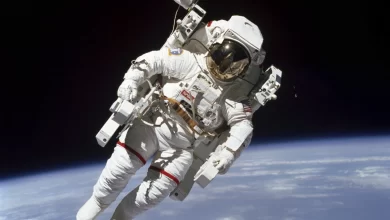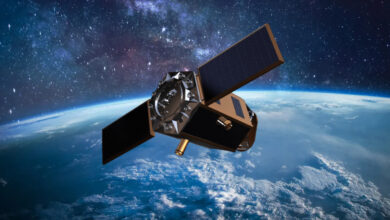Why is Neptune’s moon Triton so strange?

Discovered 167 years ago, Neptune’s moon Triton is one of the strangest objects in the Solar System. But why is Triton, a very large moon, so strange?
In fact, astronomy is very much like a forensic investigation. Just as we cannot reconstruct what happened at a crime scene, we cannot reconstruct what happened in the past in astronomy. So how do we find the unknowns in forensics? Of course, thanks to the small clues left at the crime scene. Astronomy also studies crime scenes to understand events in the farthest reaches of space. In fact, we don’t have to look very far for a crime scene. Neptune and its orbiting Triton in the outer reaches of our solar system contain a mysterious crime scene. So how did Neptune end up with a satellite like Triton?

Neptune and Triton
Neptune has 14 known moons. With the exception of Triton, all of Neptune’s moons are very small and fall into two general groups: regular and irregular. The regular ones orbit close to the planet, while the irregular ones are usually farther away from Neptune and in all sorts of orbits.
And then there is Triton, discovered by British merchant and amateur astronomer William Lassell. Triton was spotted in 1846, just 17 days after the discovery of Neptune. The first close look at this mysterious satellite was taken 143 years later, on August 25, 1989, by Voyager 2. Although Voyager 2 only mapped 40 percent of Triton’s surface, the mission was enough to reveal just how strange Neptune’s moon is.
The first thing you need to know about Triton is that it’s pretty big. The seventh largest moon in the solar system, Triton is 200 times larger than all of Neptune’s other moons combined, which makes it really remarkable.

The second thing you need to know is that Triton is one of the irregulars. It orbits in the opposite direction to Neptune’s rotation, and its orbit is tilted an astonishing 67 degrees – almost perpendicular to its parent planet. Some of the moons of planets in our system also orbit in the opposite direction to their parent planet. But none are as big as Triton. The largest of these, Phoebe (Saturn), has only 8 percent of Triton’s diameter (and 0.03 percent of its mass). Despite its irregularity, Triton’s orbit is surprisingly circular – in fact, it has one of the most perfectly circular orbits of any body in the Solar System.
Triton’s surface actually resembles a melon. Much of Triton’s mid-latitudes are covered in bumpy, wrinkled features called melon terrain. Another large part of the satellite is characterized by vast, shapeless plains dotted with huge calderas, while the southern part is dominated by a vast blanket of nitrogen ice dotted with dozens of water-spewing volcanoes.
Triton’s surface also doesn’t have many craters, suggesting that the moon has the ability to resurface and seal craters. This is a rare feature in the solar system and indicates that Triton is still relatively warm. Of course, this warmth is on the inside, the outer surface is about -253 degrees Celsius. That’s colder than Pluto, the outermost planet.
Identification of suspects
We have gathered the hard facts from the scene: Triton is much bigger than it should be, has a completely bizarre orbit, was formed unconventionally and has a young, dynamic and active surface.

So what is the story behind these oddities? The best answer is that Triton may not be an ordinary satellite, but the victim of an interplanetary “abduction”. Triton may be a Kuiper Belt object, more like Pluto or Eris than other moons of the Solar System. Perhaps Triton fell near Neptune long ago, was captured by the planet’s gravity, and has been trapped there for the remaining billions of years.
Either Triton was unlucky and had exactly the wrong orbit to come close to Neptune, or it had a collision with one of Neptune’s original moons and was left hanging in orbit in the process. Another possibility is that Triton, like many other Kuiper Belt objects, formed as a small binary system. In this scenario, it is possible that Triton’s twin was blown away in a close encounter with Neptune and Triton was trapped.

The fact that Triton was caught in Neptune’s orbit also explains its strange orbit. The reason Triton stays hot may be that, like Kuiper Belt objects, it has enough radioactive elements to give off heat. This heat could have turned water, carbon dioxide and nitrogen ices into slush, keeping the surface young and active, just like on Pluto. Triton could even be so hot that there could be an ocean of liquid water beneath its crust.
It’s been 34 years since we last saw Triton up close.Unfortunately, no mission is currently planned to return to the Neptune system. NASA is focusing its future programs on the Jupiter and Saturn systems.This makes sense because both planets are surrounded by moons that are thought to have liquid water.And they are much, much closer than Neptune.
So there’s a possibility that we may not see a follow-up mission on Neptune and Triton in our lifetimes.However, it is likely to take decades before this crime scene is fully explored.But don’t worry, we have plenty of time until Triton disappears (yes, it will disappear soon).Scientists estimate that in about 3.6 billion years, Neptune will pass below the Roche limit and disintegrate.






